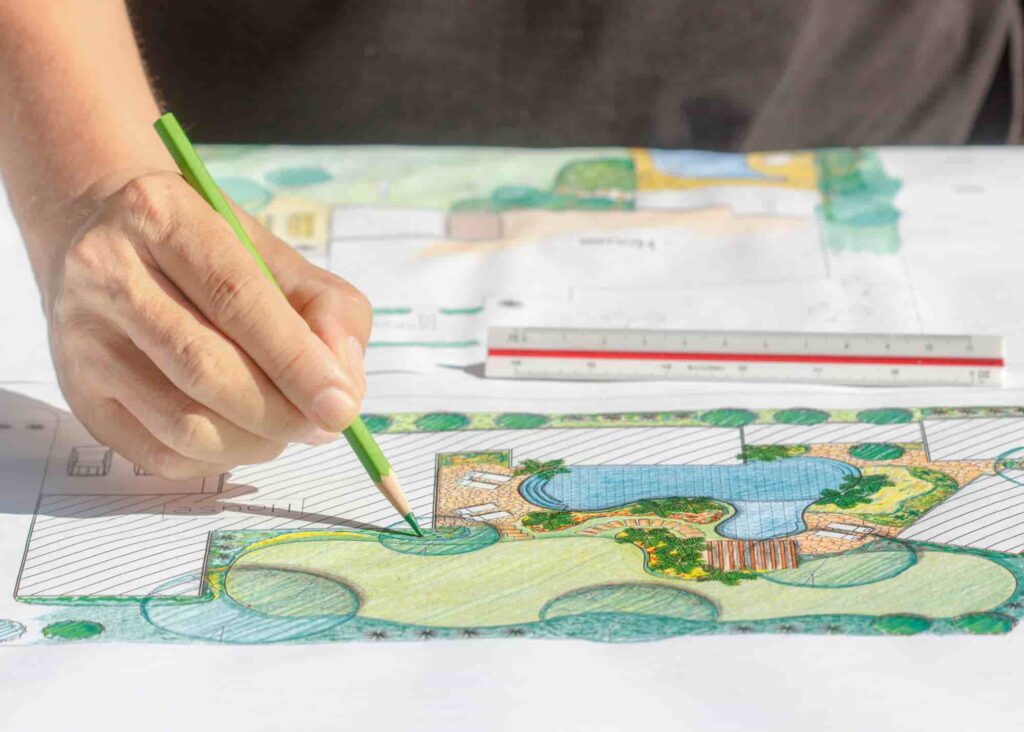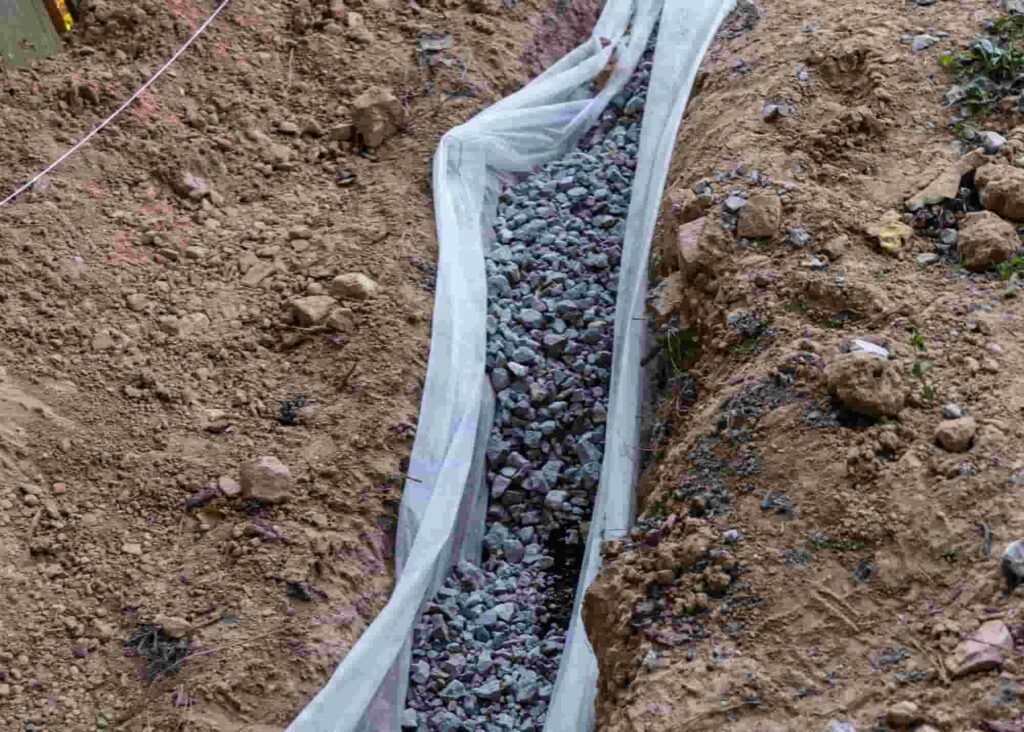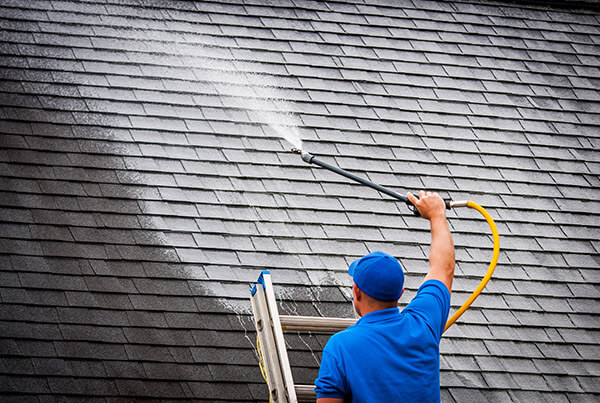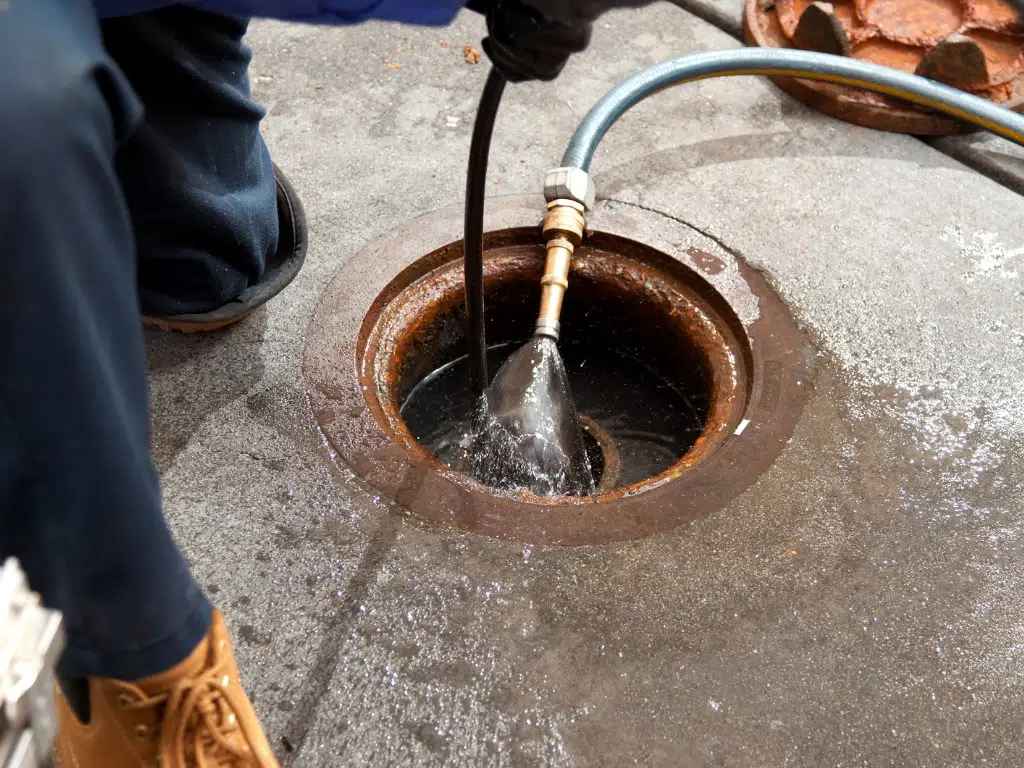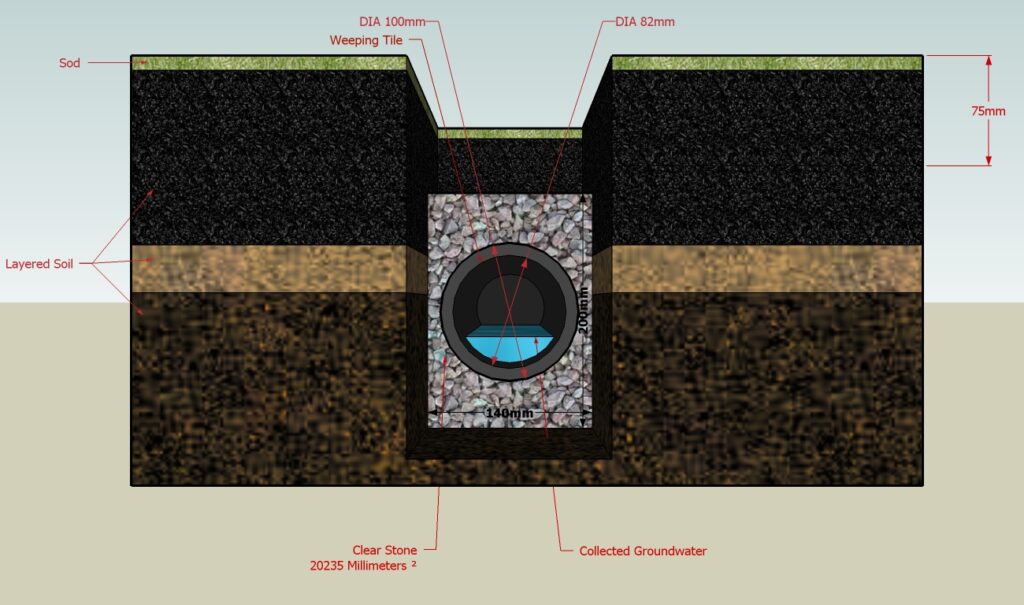In the greater Chicago area and beyond, residential property owners understand how summer rains and heavy snow can both positively and adversely impact their yards. Abundant moisture can help to create the inviting yard of your dreams. However, excess water with no place to drain can turn your yard into a nightmare and keep you indoors through even the balmiest summer nights.
A great yard drainage system can make the difference between a swamp-like, eroded yard and a thriving, plush lawn. Nevertheless, to design a drainage system, you need strategy, expertise, and a residential drainage layout plan. Let’s take a look at all you need to know about drainage planning and drainage system design.
Why you need a drainage system
DIY yard drains (such as rain gardens) or a professional drainage specialist-designed and installed yard drainage systems (like French drains) are vital to the integrity of your property. However, a lack of a strategic design for your yard drainage system can lead to structural damage, significant water damage, and a host of other problems.
Without an effectively planned and designed drainage system in place, the following costly challenges could arise:
- Cracks in your property foundation
- Damaged landscaping
- Dead grass
- Dead plants
- Flooding
- Infestation (pests like mosquitoes and rodents could thrive in your swampy yard)
- Mildew
- Mold
- Soil erosion
- Standing or swamp-like water
The benefits of a yard drainage system
When you strategically design your drainage system, or hire professionals to create and implement yard drains, the benefits are enormous. In the greater Chicago area, the right yard drainage system can effectively disperse water runoff from heavy rains and snowstorms and give you the healthy outdoor sanctuary you deserve.
Here are some of the benefits of excellent drainage system design:
- Disperses excess water to yard areas that need it
- Eco-friendly
- Enhances and protects your landscape
- Increases property value
- Prevents flooding, standing water, and water damage
- Protects foundational integrity
- Protects hardscapes
- Reduces soil erosion
- Removes pollutants and debris from your yard and from drained water
How to design a yard drainage system
When discerning whether you should design and install a DIY yard drainage system, or should hire professionals to help you, there are many factors to weigh. It’s important to consider your existing landscape design, water problems you’ve experienced as a residential homeowner, and what design can enhance your yard.
Similarly, you should discern the cost of yard drainage design and what will fit within your budget. Although the initial cost of a professionally designed and installed yard drainage system may seem large, in the long run, the right landscaping team can save you years of headaches and astronomical repair and replacement costs.
Great landscaping designers will also collaborate with you to ensure your customized residential drainage layout plan fits your needs and blends in well with your yard design.
The Chicago area experiences an average of 36.83 inches of annual precipitation, which is great for plant growth and rich, green lawns, but also makes water damage a realistic risk for homeowners.
How to make a residential drainage layout plan
So how do you create a residential drainage layout plan? Drainage planning requires strategy and should complement your landscape design. Here are some of the contributing factors that can help you discern and design the perfect drainage system for your yard:
- Soil Type:
By determining your yard’s soil type, you can determine which drainage type would work best. For example, stubborn, clay-like soil may need a French drain to ensure that water is correctly absorbed and dispersed. On the other hand, sandy soil functions well with rain gardens.
- Landscape Design:
If you have a garden or existing hardscapes (like a patio or outdoor kitchen), these landscape elements can impact the design of your drainage system. For instance, gutters and downspouts alone may not correctly divert water from hardscapes. Dry creek beds, French drains, and surface drainage systems are fantastic options for hardscapes.
- Yard Grading:
It’s important that your yard has been properly graded to ensure that your yard drainage system correctly directs waterflow. Yard grading creates necessary sloping in your yard to divert water away from your home. Even after installing a fantastic drainage system, yards without grading won’t drain well.
Types of yard drainage systems
Thankfully, there’s a multitude of yard drainage systems to choose from and each can effectively protect your property and raise your property value. Some yard drainage systems can provide fun DIY projects, and others are best left to professional landscaping services.
Here are a few of the most popular yard drainage designs to help give you an idea of what to look for:
- Dry Well:
A dry well yard drainage system is installed underground and won’t interfere with your landscaping. Excess water is collected in an underground dry well and then dispersed to the areas of your yard that need it the most. Professional landscapers are your best bet to ensure this drainage system is properly installed.
- French Drain:
The French Drain is the most popular drainage system in Northeastern Illinois. It requires little maintenance or upkeep, and is extremely cost-effective. This yard drain is the best option for homeowners whose properties are prone to flooding, and incorporates deep trenches and landscaping features like gravel and mulch.
- Rain Garden:
The rain garden is a phenomenal option for homeowners who enjoy DIY projects. This yard drainage design incorporates landscape elements such as flora and rock features. Rain gardens are great for the environment, foster plant growth, and prevent soil erosion.
Steps to drainage system planning
If you choose to install a yard drainage system on your own, here’s what you’ll need to plan:
- Drainage ditch:
The area you map out to act as a drainage ditch should act as the collection area for excess water and connect to the channels that lead to the outlet component of your drainage system.
- Leach field:
Also known as a drainage field, the leach field removes waste, debris, and other pollutants from your water runoff and diverts water away from your property.
- Outlet:
Determine where to put your drainage system outlet based on your landscaping design. The outlet should lead away from your property and to an exit point. Some designs of yard drainage systems include multiple outlets.
What is the average cost of a yard drainage system design?
The cost of a yard drainage system can vary based on the type of system you choose and if you choose professional help over self-installation. Surprisingly, self-installation doesn’t necessarily equal the most cost-effective yard drainage solution. Professional and experienced landscapers may be able to provide the best long-term cost solution.
However, according to Angi (formerly Angie’s List), the cost of a yard drainage system can range from $800-$15,000, depending on the scale of the project. The popular website also lists the average cost of yard drainage solutions at $4,608.
Drainage system FAQ
As you research which kind of drain would work best for your needs, it may be useful to understand the questions that often arise about designing a drainage system. Here are a couple of the most common questions Ware Landscaping receives about yard drainage systems.
What can I do about poor drainage in my yard?
If you have an existing drainage system but find you’re still experiencing poor drainage in your yard, here are some solutions that may provide temporary relief:
- Aerate your lawn:
You should aerate your lawn once a year if the yard is full of clay-like soil, and once every two-three years if your yard has sandy soil. Air provides vital nourishment to your yard and aeration can help to reduce the risk of flooding or standing water and prevent soil erosion. DIY aerators are available in most hardware and home care stores.
- Replace existing topsoil with healthy topsoil:
If you’ve noticed soil erosion, dead areas, or specific areas that collect standing water in your yard, your topsoil might be unhealthy. Replacing your topsoil can help to keep your yard healthy and thriving.
- Dig a creek bed:
A creek bed design for a DIY yard drainage system can direct rain runoff through a natural-looking landscape feature and help with soil irrigation.
Based in Naperville, Illinois, Ware Landscaping is family-owned and operated. For over 20 years, we’ve been helping our Chicago-area neighbors create the landscapes of their dreams and design efficient yard drainage systems. We’re here to keep your property looking pristine throughout every season!
Contact us for your landscaping, yard drainage, and maintenance needs and check out our website to discover landscaping tips, our multiple service locations, satisfied clients, and more about our comprehensive services.


